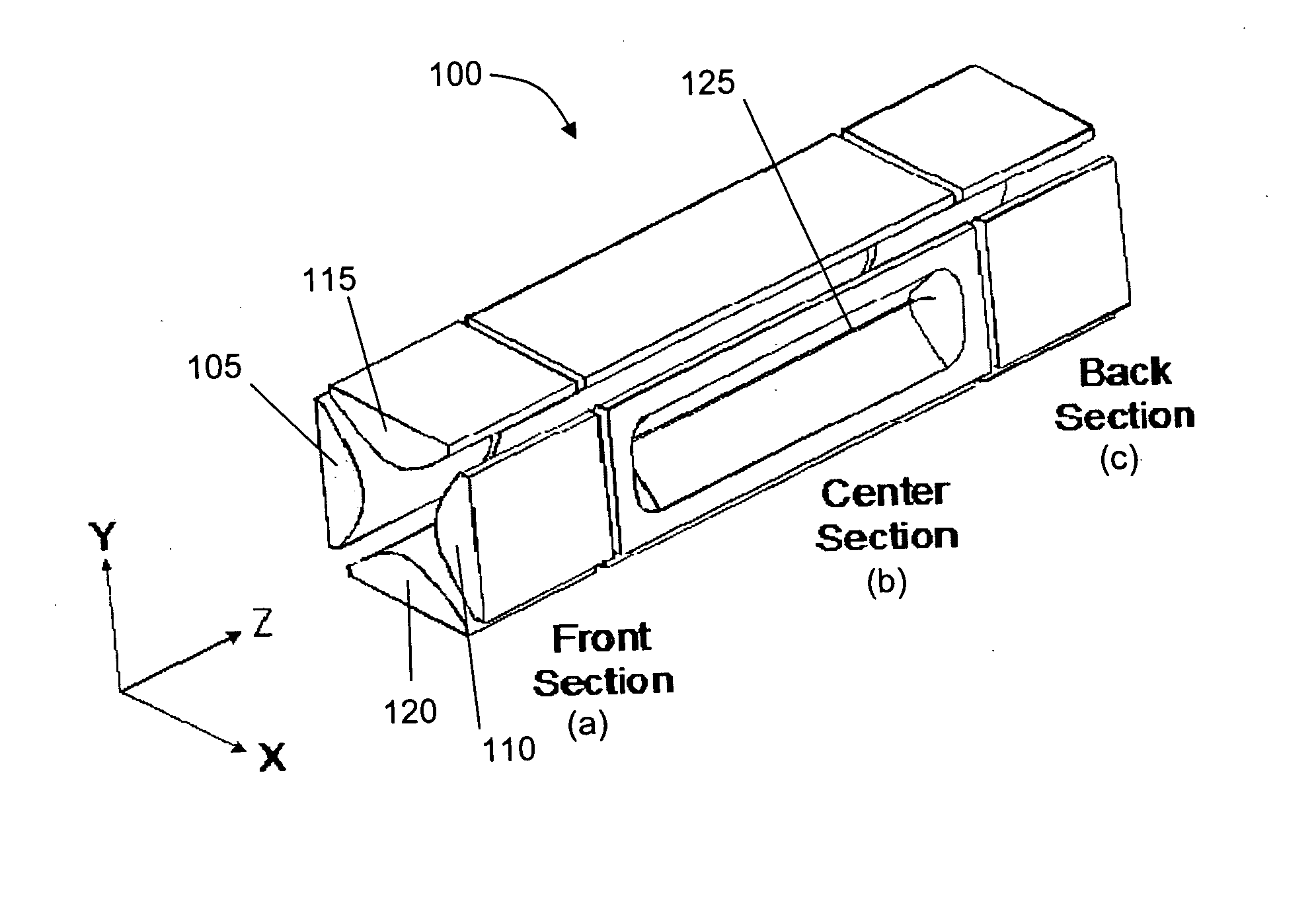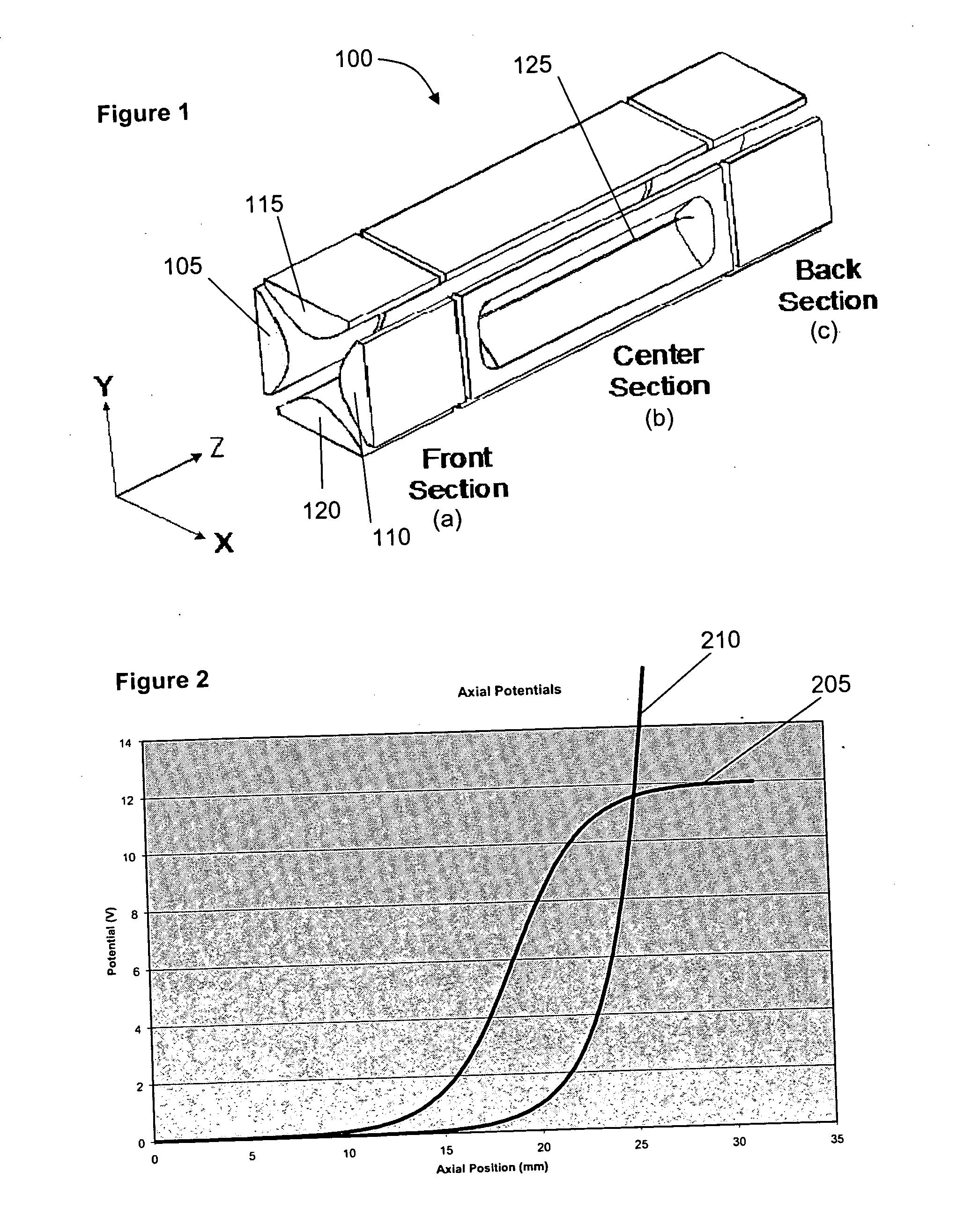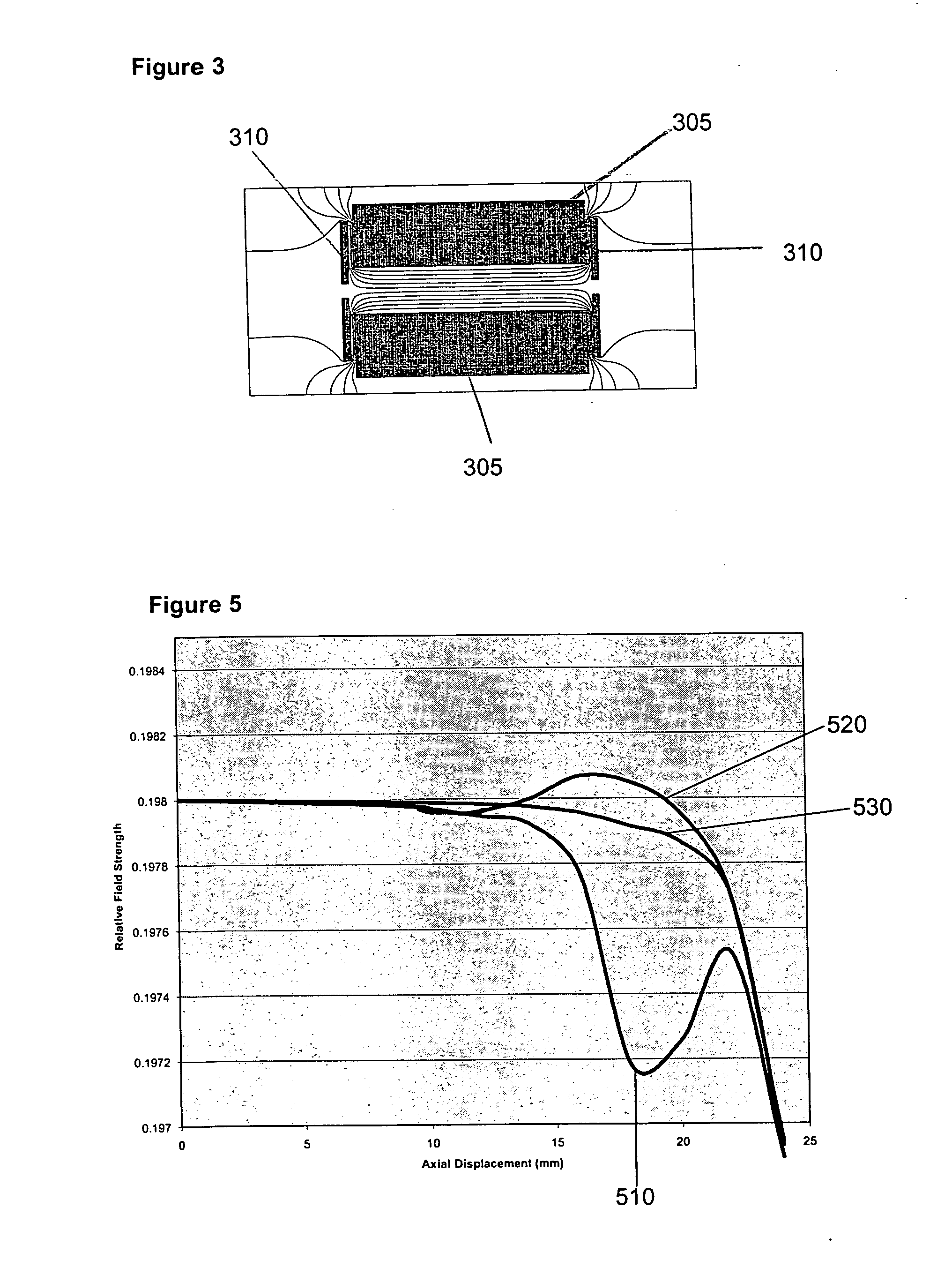Two-dimensional quadrupole ion trap
a quadrupole ion and trap technology, applied in the field of two-dimensional quadrupole ion traps, can solve the problems of affecting the resolution attainable, the loss of ions is substantial, and the degradation of structural integrity, so as to reduce the complexity of the electronics system, reduce or minimize the distortion of the radial quadrupole potential, and reduce the inhomogeneity of the axial field
- Summary
- Abstract
- Description
- Claims
- Application Information
AI Technical Summary
Benefits of technology
Problems solved by technology
Method used
Image
Examples
Embodiment Construction
[0031] One aspect of the present invention is illustrated in FIGS. 4A, 4B, 4C and 4D. A two-dimensional substantially quadrupole structure 400 is shown in FIG. 4A comprising a plurality of electrodes or rods, in this particular case, two pairs of opposing rods, a first pair 405, 410 and a second pair 415, 420. In this figure, as per convention, the rod pairs are aligned with the x and y axes and are therefore the first pair 405, 410 is denoted as the X rod pair, and the second pair 415, 420 is denoted as the Y rod pair. The rods 405, 410, 415, 420 have a hyperbolic profile to substantially match the equipotential contours of the quadrupolar RF potentials desired within the structure. By adding a pair of plate lenses (not shown) at the ends of the quadrupole structure 400 to provide the axial DC trapping field, an ion trap is formed. An interior trapping volume 425 is defined by two end plates (not shown), at least one of which has an aperture, with the appropriate voltages to keep t...
PUM
 Login to View More
Login to View More Abstract
Description
Claims
Application Information
 Login to View More
Login to View More - R&D
- Intellectual Property
- Life Sciences
- Materials
- Tech Scout
- Unparalleled Data Quality
- Higher Quality Content
- 60% Fewer Hallucinations
Browse by: Latest US Patents, China's latest patents, Technical Efficacy Thesaurus, Application Domain, Technology Topic, Popular Technical Reports.
© 2025 PatSnap. All rights reserved.Legal|Privacy policy|Modern Slavery Act Transparency Statement|Sitemap|About US| Contact US: help@patsnap.com



